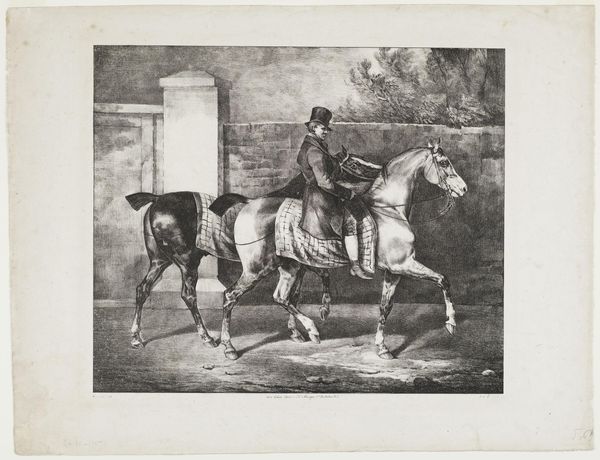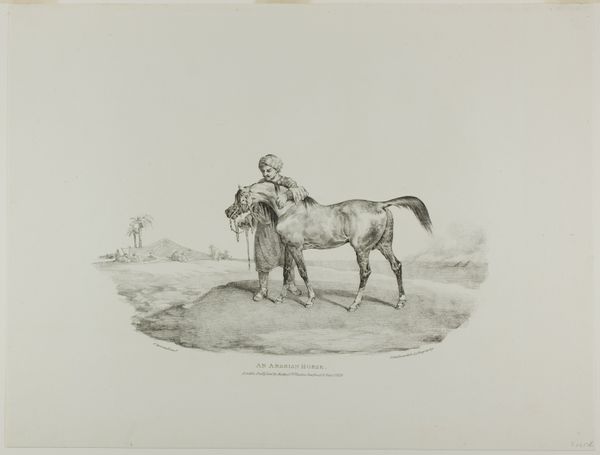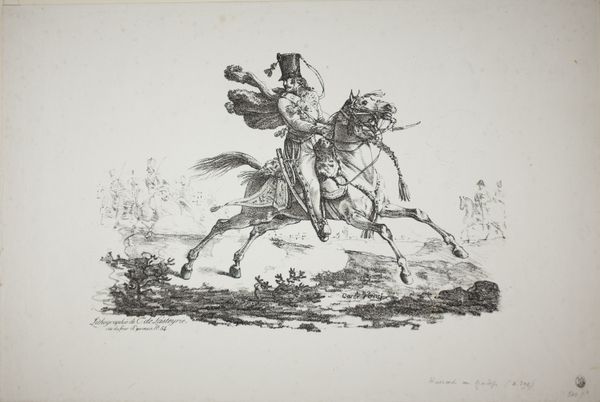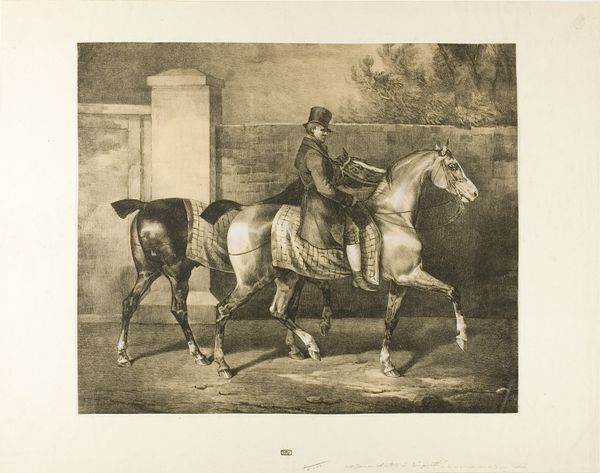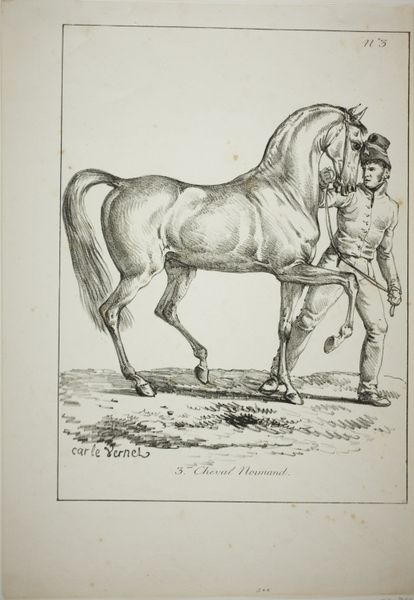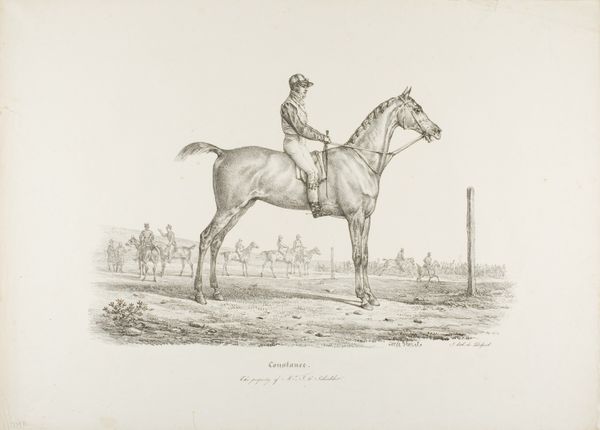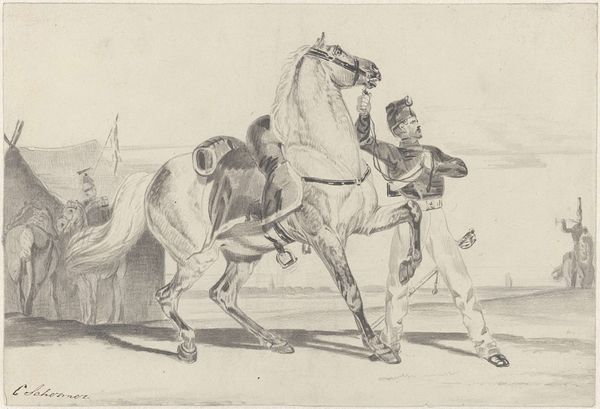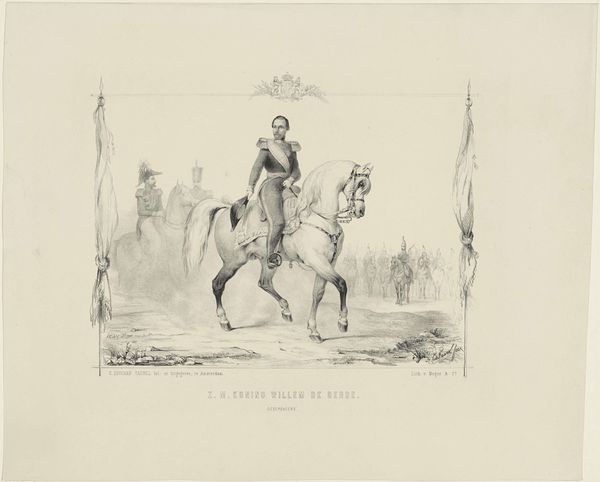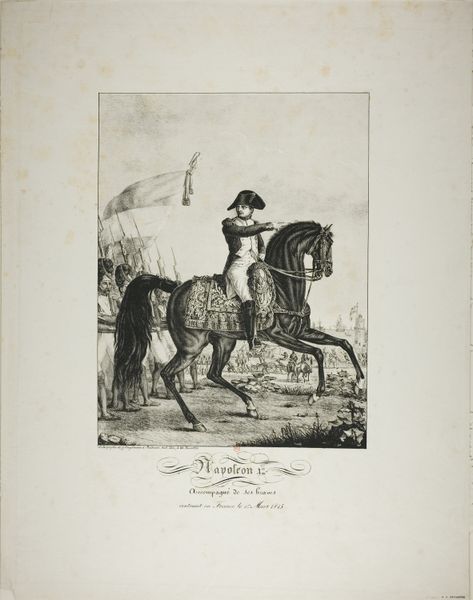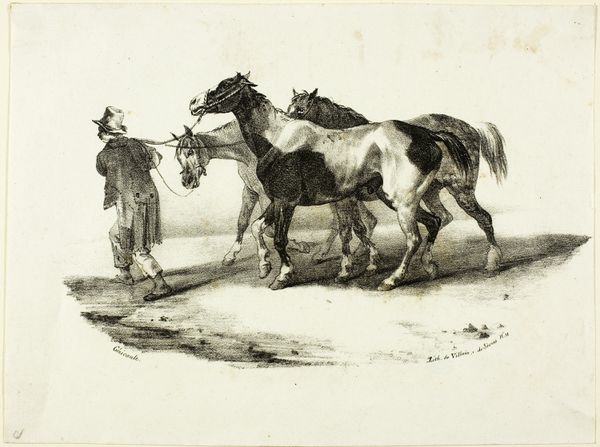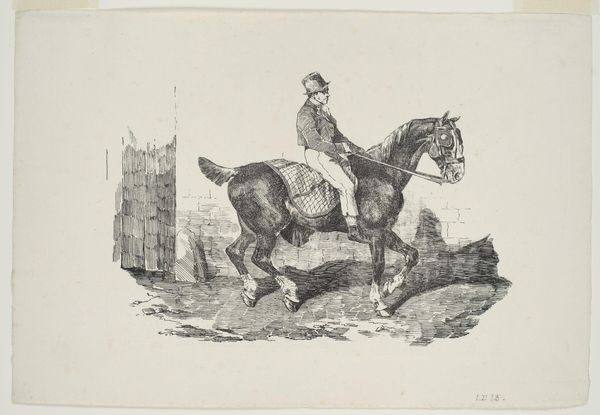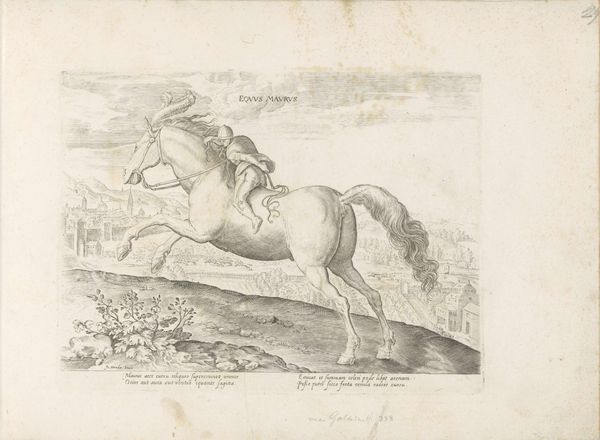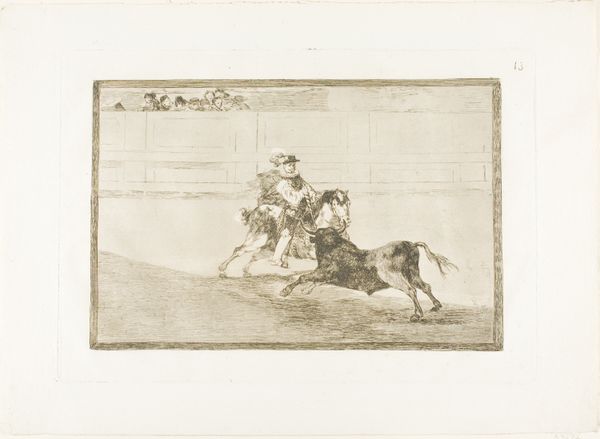
Horses Exercising, plate 6 from Various Subjects Drawn from Life on Stone 1821
0:00
0:00
drawing, lithograph, print, paper, pencil
#
portrait
#
drawing
#
lithograph
# print
#
landscape
#
figuration
#
paper
#
pencil drawing
#
romanticism
#
pencil
#
genre-painting
#
history-painting
Dimensions: 292 × 411 mm (image); 383 × 557 mm (sheet)
Copyright: Public Domain
Editor: Here we have "Horses Exercising, plate 6 from Various Subjects Drawn from Life on Stone" by Théodore Géricault, created in 1821. It's a lithograph on paper, and it’s incredibly dynamic! The movement practically leaps off the page. What are your initial thoughts about the composition? Curator: Indeed, the dynamism is compelling. Notice how Géricault uses line weight to create a sense of depth and movement. The contrast between the darker, more defined forms of the horses in the foreground and the sketchier background creates a visual hierarchy. The lines are energetic, aren't they? Almost frantic. Editor: Yes, there's a real sense of urgency, even anxiety. I'm struck by how the textural variety is achieved. The coats of the horses, for example, appear so distinct. How does Géricault achieve this effect with lithography? Curator: He masterfully exploits the tonal range achievable through lithography. The strategic placement and density of lines suggest form and texture. Look at the horse’s musculature, how it is implied through the gradations of tone rather than explicitly defined outlines. Notice, too, how the lithographic crayon allows him to build up the forms slowly, to refine and redefine them, layer upon layer. Editor: So it’s the building up of tones, and not just a linear approach, that gives the image its depth? Curator: Precisely. And observe how the subtle variations in tone model the light. He's created depth without a wide range of dark to light – almost entirely in midtones. The surface of the print becomes not just a carrier of information but also a source of visual interest in itself. How do you perceive that interest functioning in the piece overall? Editor: It almost makes the piece seem unresolved somehow – but I can appreciate how those midtones help give the image a more three-dimensional quality! This really helps me appreciate the technical skill involved. Curator: Absolutely. By analyzing the formal elements – line, tone, composition – we gain a deeper appreciation for Géricault’s artistic choices and technical mastery.
Comments
No comments
Be the first to comment and join the conversation on the ultimate creative platform.
